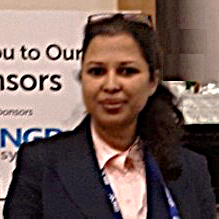
Deep Dive and Comparison of NVMe RAID Solutions: Performance Analysis and Datapath Breakdown

Salon VI
Mon Sep 18 | 10:35am
Abstract
In this presentation, I will delve into the world of NVMe RAID and present a comprehensive analysis and comparison of various NVMe RAID engines. Through comparative testing and performance analysis using state-of-the-art performance analysis tools, I have identified bottlenecks in these engines when handling different workloads. During the presentation, I will provide valuable insights and comparisons, showcasing significant figures that highlight the performance differences among the tested NVMe RAID solutions. Furthermore, I will conduct an in-depth examination of the datapaths employed by these engines, shedding light on their inner workings and architecture. Key focus areas of the presentation will include popular NVMe RAID engines such as mdraid, xiraid, RAID 5f from SPDK, and other notable products. By exploring their strengths and weaknesses, attendees will gain a comprehensive understanding of the capabilities and limitations of each solution. This presentation aims to provide the audience with practical knowledge and actionable insights, enabling them to make informed decisions when selecting the most suitable NVMe RAID solution for their specific requirements. The findings and comparisons shared will contribute to the ongoing advancement and optimization of NVMe RAID technology, driving improved performance and efficiency in storage systems.
Learning Objectives
- Gain an understanding of the performance characteristics of different NVMe RAID solutions
- Explore the datapath architecture of NVMe RAID engines
- Apply performance analysis tools for NVMe RAID evaluation:

Related Sessions
Navigating NVMe-oF Authentication: Best Practices for Key Management in Pre-AVE and Post-AVE Deployments
NVMe-over-Fabrics (NVMe-oF) offers DH-HMAC-CHAP as its in-band method for authenticating hosts and subsystems. To enhance authentication capabilities, the specification recently introduced the Authentication Verification Entity (AVE) – a logical entity designed to manage and verify the authentication process. AVE enables centralized or semi-centralized authentication, simplifying the management of authentication keys and improving security in large fabrics deployments.
However, the specification lacks comprehensive guidelines on implementing authentication mechanisms, particularly in determining when to use single versus multiple authentication keys. This ambiguity existed before AVE and still persists after its addition. The absence of clear recommendations poses challenges for implementers, especially in managing security risks, key isolation, and scalability.
In this talk, we address these gaps by discussing all the recommendations that we identified in the NVMe specification and the open-source ecosystem during our product development.
Sprandom - A Fast Method to Reduce the Random Preconditioning Time of SSDs from Days to Hours
As SSD capacities increase beyond 16TB, the time to randomly precondition these drives has also increased from several hours to several days. Traditional methods involve a sequential write followed by multiple random writes to reach a steady state. We present Sprandom (SanDisk Pseudo Random) – a novel approach to random preconditioning that uses the Flexible I/O Tester (fio) to achieve near steady-state performance with just a single physical drive write. Our experiments show that using the Sprandom method, the random preconditioning time of large (> 64TB) drives can be reduced from days to hours.
Host Management of NVM Express™ Exported NVM Subsystems in PCIe™ SSDs
This presentation explains how an NVMe™ PCIe SSD supporting multiple NVMe controllers can be used to create and migrate virtual NVMe SSDs (i.e., Exported NVM Subsystems). The commands used by a host managing these virtual SSDs are fully illustrated using animation and demonstrates the interoperability between different SSD vendors during migration. Come and see how the virtual NVMe SSD is abstracted from the underlying NVMe SSD for the migrating Virtual Machine.







